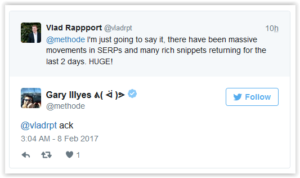Facebook’s New Lead Generation Messenger Feature and What it Means for Advertisers
On August 29th Facebook started their global roll out of their new lead generation feature in Messenger to all advertisers. This feature allows businesses to create an automated question and answer experience within their Messenger app that launches via click-to-Messenger ads on Facebook News Feed. This is just one of the many new tools Facebook has introduced in the past year with the intentions of streamlining the advertising and communication processes from brands to users.
How it works:
The automated lead generation feature is designed to be used in conjunction with click-to-Messenger ads, which triggers conversation between businesses and Facebook users. If you’re unfamiliar with click-to-Messenger ads, they were one of three new ad additions Facebook released back in February. These ads appear in user’s regular News Feed and will open a Messenger chat with the brand if the ad is clicked. With the new feature, businesses can now set up an automated question experience. The ad opens Messenger and kicks off a set of questions that can be answered through pre-filed or free form text. The system is also designed to send follow-up reminders if users do not complete the questions.
Businesses can integrate Messenger with their CRM provider to capture the information provided by customers and identify qualified leads. Then, Pages can manually continue the conversation through Pages Inbox, Pages Manager App, or a third party-live chat provider.
What it means for advertisers:
According to a recent survey, 42% of those polled said they expect a response via an online chatbot within five seconds of sending a message. By integrating an automated lead generation feature that directly connects a CRM platform to its click-to-Messenger ads, brands are not only able to respond more quickly to customer inquiries, but also streamline all communication with their customers on the platform.
Facebook says that “businesses engaging with potential leads in their preferred channels are seeing results, and finding it easy to continue the conversation and seamlessly nurture leads in Messenger.” They reported that RIFT Tax, a financial services company, used the new feature to increase its customer base of Armed Forces members and increased their qualified leads by 42%. They were able to respond to users in less than 10 minutes, which increased their lead resolve rate by 18%.
Along with Facebook ads targeting, this feature allows advertisers to further drive interested people into conversation with your business. You can start to take action on leads in Messenger when it’s convenient for both you and your customers. You can easily send reminders to users that haven’t completed the questions, and nurture leads where they spend their time. Finally, with an integrated CRM, your sales team can start immediately taking action.
To try out the lead generation feature:
- Visit Ads Manager.
- Select “Messenger Objective” and set “click to Messenger” as your message destination. The lead generation template is under the Ad Level in “Message Setup” section.
- Select the option “Generate Leads” and click “+ Create Chat.”
- Add a welcome message, a question, a thank you, a disqualifying message, a completion reminder, and your privacy policy.
- Finalize the setup and submit for approval.
Final Thoughts
Currently, there are around 300,000 developers building on Messenger, and people and businesses exchanging over 20 billion messages on the platform each month. This option helps to improve the bots and conversation process overall. The more options business have to utilize them, the more popular they will become, and as utility increases, you can also expect consumers to become more attuned to bot usage, further boosting their appeal.
More From Onimod Global
To catch up on the latest digital marketing news and trends, click here. To find out more about who we are and what we do, click here!









